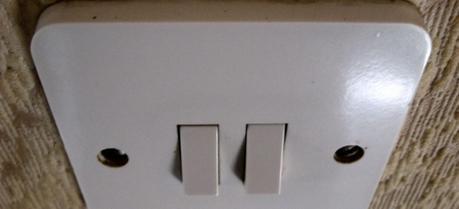 Stanford students are redesigning household appliances and fixtures to reduce energy and water consumption. (Credit: Flickr @ R/DV/RS http://www.flickr.com/photos/redvers/)
Stanford students are redesigning household appliances and fixtures to reduce energy and water consumption. (Credit: Flickr @ R/DV/RS http://www.flickr.com/photos/redvers/)People are more likely to conserve energy if it’s easy to do. Knowing this, the students working on the Stanford’s entry in the Solar Decathlon green-building competition wanted to do two things: make the most energy-efficient house possible, and encourage people to make conscious decisions about their energy consumption. That’s why when you switch off the light in the Start.Home, you do so by swiping your fingers across a glowing touchpad.
The redesigned light switch was born from a brainstorming session on how to eliminate excess energy consumption throughout the house. The students zeroed in on two common culprits: people leaving lights on in empty rooms, and so-called vampire power, the small amount of electricity that electronics pull from the socket even when they’ve been switched “off.”
The design team approached the task of making the Start.Home more energy efficient knowing that the most energy-efficient option should require the least amount of effort, said Jason Bade, ’13, who leads the project’s interaction design team. Crawling under cabinets to unplug appliances or switching off each lamp in a room is the energy-responsible thing to do, but it’s too much of a hassle to become a consistent behavior.
An easy and effective solution would have been to connect all the lights and outlets to an automatic motion sensor that shuts everything off when a person leaves the room, Bade said. But installing such a sensor is a one-time decision that the homeowner makes to be energy conscious, and has limited impact on encouraging people to make better energy decisions. It places control in the technology, not the person.
“What happens if the system breaks, or what happens if you’re in a house or office building that doesn’t have the same design features?” Bade said. “We want to give people a sense of understanding of their energy consumption, and to empower them to make better energy behaviors because they want to. If they actively reduce their energy consumption in the house, then hopefully they’ll behave that way in the rest of the world too.”
The Start.Home features a custom-made “room switch.” As you leave a room, a touchpad mounted near the doorway will gently glow to remind you to turn off lights and unnecessary outlets. The switch operates much like a touchpad mouse on a laptop computer, and various tap or swipe sequences can issue different commands to turn off some or all electricity to a room.
The design group applied the same design philosophy when designing another type of switch. People waste a huge amount of water by leaving the bathroom sink running while they brush their teeth or shave. The Start.Home’s solution is a knee-operated switch built into the sink cabinet. Simply lean against it, and water flows as you need it; remove pressure, and the water stops.
“We’re redesigning things that have been around for a hundred years,” Bade said. “To get people to adopt this, we had to also design them to be better than what we’re used to.”
So far, focus groups have responded well to prototypes of both devices, and the students calculate that the devices will make significant energy and water savings over the long haul.
Original article by Bjorn Carey, video by Kurt Hickman

